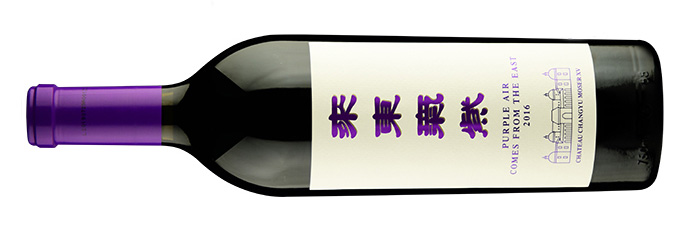Chief winemaker Lenz Moser from China’s Chateau Changyu–Moser XV will embark on a global tour in March to launch the winery’s new ultra-premium Cabernet Sauvignon.
The 2016 wine – called Purple Air Comes From The East – is a 100% estate-grown Cabernet from the Chateau’s Ningxia Provence vineyards and is limited to just 6,300 bottles.
Moser hopes it will rival similarly premium offerings from China. ‘I need to rub shoulders with the likes of Long Dai from Lafite and Ao Yun LVMH and I couldn’t resist making an icon wine,’ said Moser during a dinner in London to showcase Changyu–Moser XV’s wines.
‘It has a very Chinese-looking label and it is going to raise the bar again for the Chateau,’ he added.

Moser has been working with China’s Changyu winery since 2005 as a consultant and winemaking adviser and launched the Chateau Changyu–Moser XV label in 2015 in partnership with them.
‘Our vision is very simple we want to revive China’s quality game and make sure our wine is not just among the very best of China, but also belonging in the company of the world’s finest,’ he said.
Moser believes that China is the future for global wine consumption and production. In the future he predicts that 70% of the market for Chinese wine will be domestic. ‘China will be our biggest market by far, it will follow the USA model where only 15% of wine is exported,’ he said.
White wine worries
He does foresee a bump in the road, however, and is working hard to solve it. ‘China has a huge problem; women are driving the market and they want white wine but China produces 90% red wine. I can see a great future for white wine in China,’ he said.
This is why Changyu–Moser launched a white Cabernet Sauvignon in 2017. ‘White Cabernet is something which we did out of necessity,’ he said. ‘At the Chateau I had 250 hectares of Cabernet Sauvignon but I had to have a white so I got creative and made the only white Cabernet in the world.’
Moser will continue to produce this now iconic wine but plans to make more conventional white wines in the future and is experimenting with Grüner Veltliner this year. He is positive it will work in China given his background with the grape at his family estate in Austria and experience of the soils and geographical landscape in Ningxia.
‘This year we will plant Gruner Veltliner for the first time on a small scale then next year we will plant it on a big scale so I can make a ‘proper’ white wine. I’m sure it has a very good future in China because it’s very versatile, it’s the chameleon of wine and can work with almost any food,’ he said.
Sustainability
As well as working to launch new wines Moser is conscious of the impact that wine consumption has on the environment and is working with his team in China to be more sustainable.
‘We need to take care of the environment more and our contribution at the winery is to have lighter glass bottles in the future, because China is into very heavy bottles. We are going down by 20-30% in glass weight, which makes a big difference in terms of shipping,’ he said.
He is also planning on replacing all foil and plastic capsules with recycled paper capsules. ‘If we don’t do something relatively quickly Riesling winemaking in Germany and Grüner Veltliner making in Austria, for example, will be a major problem. This is pretty scary stuff.’







